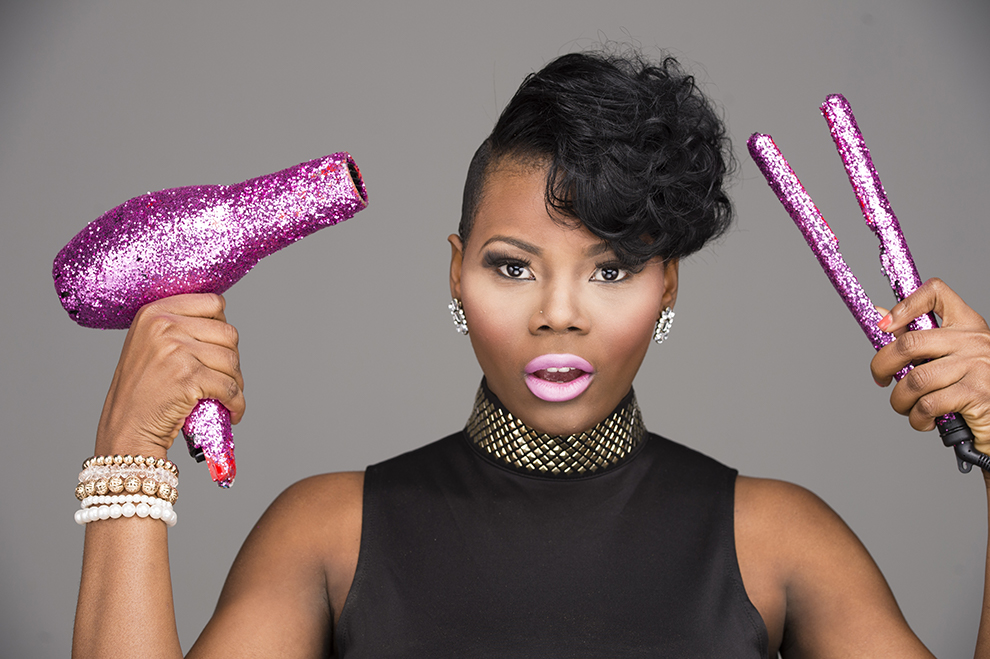We wear our hair straight for many different reasons:
Personal preference, easy maintenance, or accommodating accessories that don’t fit around curls. In recent years, the narrative around straight hair has changed. Many of us have come to believe that straightening our hair is “unnatural” and is inherently damaging.
Sorry to break the news, but whoever has been telling us that straight hair is inherently damaging and unnatural, lied.
Well, perhaps they didn’t lie on purpose. Coily hair is fragile by nature, and throughout our lives, we deal with loads of stylists that burn and tug on our delicate strands. We experiment with chemical straightening that damages our hair to the point that we have to chop it all off, or worse, it all falls off on its own.
This mistreatment of our hair by professionals has created a culture of curly girls that feel guilty straightening their hair!
In actuality, if it’s done right –straightening your hair isn’t inherently damaging.
When we are beating our kinks, curls, and coils into submission there’s more than a few ways to be sure that the flat iron and blow dryer aren’t leaving us brittle, or changing our beautiful curl pattern.
1. PREPARE YOUR HAIR
The first key to straightening without damage is hydration. The key to healthy hair in all its forms is to keep it hydrated. Whatever form we choose to wear our hair in it needs moisture. Take note that heat styling tools pull moisture from your hair, so when washing, it is a good idea to deep condition. For us straight natural girls, the deep conditioning should take the place of regular conditioning.
2. USE HEAT PROTECTANT
The second important step to combatting heat damage is: heat protectant. Obviously, you know what a heat protecting spray is. What you don’t know is that you’re probably using it wrong. Reading the instructions on your preferred product is important; the instructions are there to tell you the most effective way of using the product, so read them. Most of us will just spray the bottle on semi-dry or completely dry hair and carry along on our merry way, but the silicone (the substance responsible for protecting our hair from heat) binds better to water. It also doesn’t hurt to section off your hair into quarters to ensure that the protectant really coats all of your strands.
Note: Yes, natural hair experts have ensured that we’ve taken to heart the importance of avoiding hair products with sulfates, alcohols, and other damaging chemicals, but we also know that there’s an exception to every rule. Silicone in heat protectants is that exception. Whereas natural oils can break down when exposed to high heat, silicone stays flexible, so it can protect your hair throughout the heat styling process. Additionally, that same barrier works to lock moisture into your hair while adding slip and shine. For those naturalistas, that would still rather use natural oils as a heat protectant – pay close attention to tip 3.
3. INVEST IN STYLING TOOLS
The third key for healthy heat styling is your tools. Invest in a professional, ionic, blow dryer, and a ceramic plated flat iron, and try to limit direct contact with heat to once a week. Additionally, we often crank our straightener up as high as it goes to easily achieve silky straightness, but that could be too hot depending on your hair type. If you have your straightener set to anything above 350 degrees, try dialing down the temperature a few notches and see if that works. Thin hair can be tamed with a temperature as low as 300 degrees!
4. GET A TRIM
Lastly, get a trim. Many of us are very attached to our length, but in time, regardless of the way that we rock our hair, our ends will become scraggly, split, and broken (it’s just more obvious with straight hair). The only way to ensure that the damaged hair doesn’t move its way up from the ends through the rest of the hair shaft, is to chop off the ugly bits so that our healthy hair can shine the way it wants to.
At the end of the day, the most important thing about keeping our hair healthy through heat styling is to really understand what it wants. Get to know your hair type, and use the products and temperatures that work best for you. (Stay tuned for a post to help you with this.) Your hair will thank you.
— Charley
